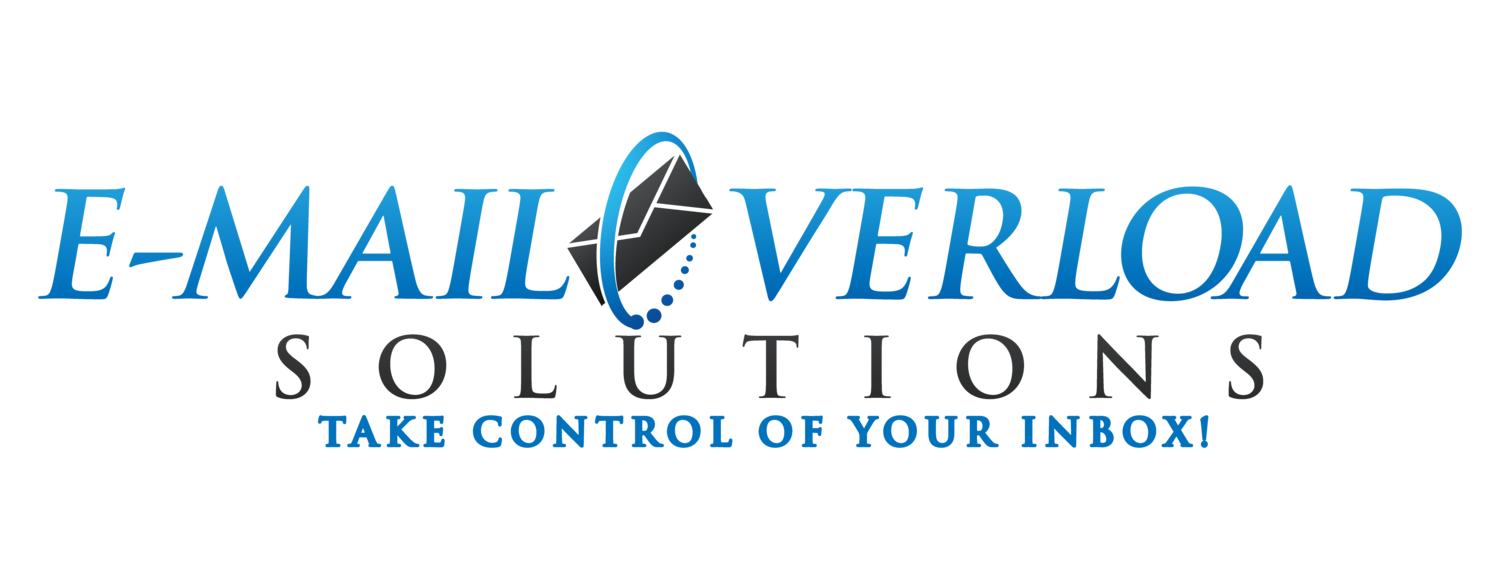Email Overload - Three Solution Approaches
/The key strategies to deal with Email overload fall into three broad groups: organizational, technological, and behavioral.
1) Email Overload Organizational approaches:
Organizational approaches to reducing Email overload incorporate the use of corporate guidelines or acceptable use policies as a way to set organizational-wide rules around the appropriate, and inappropriate, use of Email.
These approaches are also referred to as Email etiquette or netiquette, and focus on teaching people to “use Email more appropriately”.
These can run the range from being enforced as formalized policies and procedures, communicated as suggested guidelines, or expressed as cultural norms of expected behavior within the organization.
Organizational approaches are an important component to helping to manage Email use within the organization. They set a common set of values, expectations, and behaviors around the use of Email, reducing the Email overload burden for everyone.
2) Email Overload Technological approaches:
Technological approaches to reducing Email overload leverage specific features and functionality in the Email system itself as ways to reduce Email overload.
This approach has traditionally been the primary focus area for most Email training programs. The goal is on improving an individual’s fluency in the Email system and making people “use Email more efficiently”.
Research has found that there is often little formalized training on the use of e-mail, as most are presumed to be Email proficient. Yet most Email users, even those that deem themselves “Email savvy”, are only familiar with a small fraction of their Email system’s features and capabilities.
A technological approach which utilizes targeted feature training can yield significant improvements in Email skills, which can result in large reductions in Email overload.
3) Email Overload Behavioral approaches:
Behavioral approaches to reducing Email overload focus on improving the knowledge, actions, and behavior of the individual senders and recipients.
These approaches incorporate the areas of media competencies and Email triage, and focus on teaching people to “use Email more effectively”.
Media competencies include topics such as when Email is an appropriate (and inappropriate) form of communication, how to build high-quality Email subject lines and message bodies, and understanding and reducing the negative impacts of constant Email distractions.
Email triage (Email processing workflow) encompasses the difficult yet important area of improving skills in how to manage your daily inbox volumes, including how to scan, analyze, prioritize, organize, and file your Email messages.
Behavioral approaches, the way you interact with, and react to Email, are yet another critical component to improving e-mail skills and reducing your Email overload.
Research has found that in order to make the greatest improvements in your Email skills and the largest reduction in your Email overload, you must focus on elements in all three areas (Organizational, Technological, and Behavioral) in order to be truly successful.
Stay tuned... In coming posts, we will explore each of these Email overload improvement approaches in further detail.
References:
Sumecki, D., Chipulu, M., & Ojiako, U. (2011). Email overload: Exploring the moderating role of the perception of email as a 'business critical' tool. International Journal of Information Management, 31(5).












